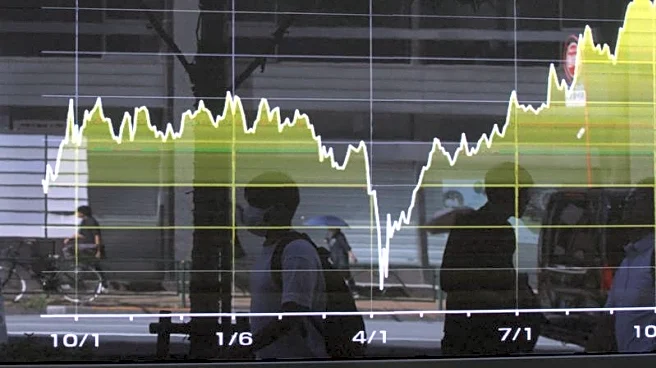What is the story about?
What's Happening?
The Building Cost Information Service (BCIS) has projected a 15% increase in construction costs over the next five years, with tender prices expected to rise by 16% during the same period. This forecast comes amidst stagnant demand and persistent inflationary pressures in the construction sector. BCIS Chief Economist David Crosthwaite described the current climate as a 'stagflation-type squeeze,' where weak growth coincides with elevated costs for labor and materials. The BCIS All-in Tender Price Index, which tracks contractors' pricing levels, rose by 2.5% year-on-year in the third quarter of 2025. Labor costs are a significant driver of input cost growth, with the BCIS Labor Cost Index rising 7.1% year-on-year in the second quarter of 2025. The forecast also predicts an 18% growth in new work output between 2025 and 2030.
Why It's Important?
The projected rise in construction costs is significant for the U.S. construction industry, which is already grappling with inflationary pressures and stagnant demand. The increase in labor costs, driven by higher national insurance contributions and a rising national living wage, could further strain contractors' margins. This situation may lead to increased project costs and potentially delay or cancel planned developments. The forecasted growth in new work output suggests some recovery, but the industry must navigate fiscal ambiguity and policy uncertainty that could stall project pipelines. The construction sector's ability to adapt to these challenges will be crucial for maintaining growth and meeting infrastructure and housing targets.
What's Next?
The BCIS anticipates that construction output will pick up more strongly from 2026 as stalled schemes begin moving forward, public sector investment is deployed, and housing activity recovers. However, tighter public finances and policy uncertainty may continue to delay tenders and increase the risk of project cancellations. Policymakers face the challenge of maintaining fiscal discipline while ensuring a steady flow of projects to stimulate growth. The industry will need to address skills shortages and manage rising labor and material costs to remain competitive.
AI Generated Content
Do you find this article useful?














